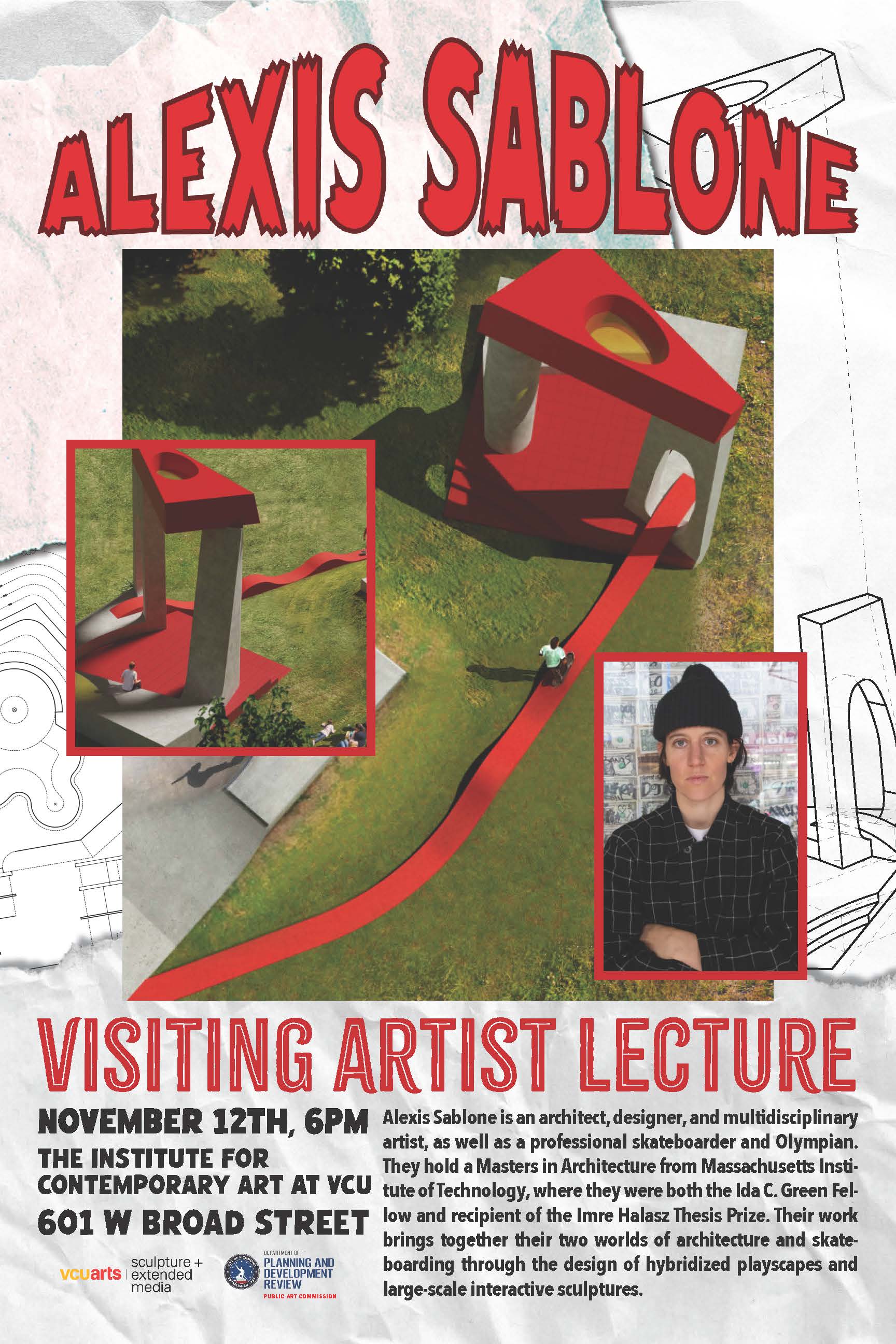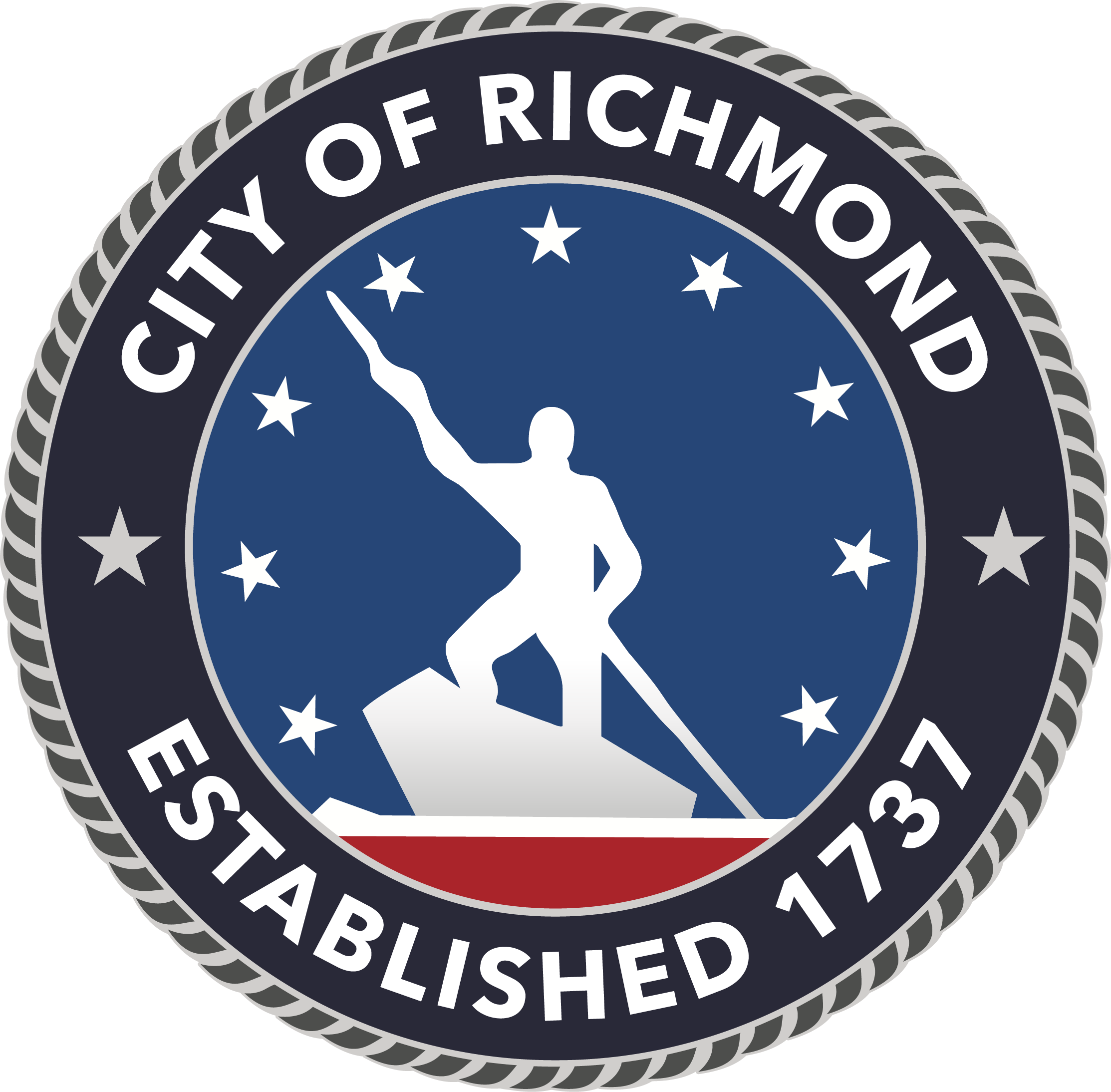Public Art Commission
Secretary: Monica Kinsey
900 E. Broad St., Room 511
Richmond, VA 23219
Hours: Monday-Friday 8 a.m. - 5 p.m
Public Art Commission
In 1991, the Planning Commission, on the recommendation of City Council, appointed a Public Art Commission (PAC) to administer a Public Art Program. In January of 1997, City Council passed an ordinance formalizing the Percent-for-Art Process and mandating its funding through the Capital Improvement budget.
Coming Soon:
- Stay tuned for more features on currently underway and upcoming Public Art Commission projects! Including:
- three community garden projects from local artists (Ellanor Milkowski Dahlgren at Alice Fitz Community Garden, Silly Genius at Broad Rock Community Garden, and Barry O’Keefe at Gilpin Community Garden)
- a skate park installation by Alexis Sablone at the Southside Community Center
- a public art installation integrated into the architecture of Fire Station #12 by a gang of three
- an interactive sculptural installation at Hillside Court playground by local artist Nastassja Swift
- a sculpture by Tanda Francis at the Trailhead of the Trail of Enslaved Africans
Stay Informed:
If you would like to get notices from the PAC about Richmond’s own RFQs, please contact the PAC Secretary to have your name added to our growing mailing list: monica.kinsey@rva.gov.
To see how we're implementing Richmond 300 and to keep up to date on Public Art Commission projects, please subscribe to the newsletter here.

Fire Station #12 Ribbon-Cutting
June 25, 2025 at 11am
The Richmond Fire Department is proud to announce the grand opening of the newly constructed Fire Station #12, the City’s oldest operating station, now reimagined for the future. A ribbon-cutting ceremony will be held on Wednesday, June 25, 2025, at 11:00 a.m., located at 2223 West Cary Street, Richmond, VA 23220.
This project marks a significant milestone in public safety and community integration, with a state-of-the-art facility that blends function with artistry and honors the station's rich history. The redevelopment involved the complete demolition of the previous structure and construction of a modern, highly functional fire station on the same historic site. Last year, Fire Station #12 received the 2024 Honor Award at the Fire Industry Education and Resource Organization’s annual Fire Station Design Awards Program.
In addition to its functional upgrades, Fire Station 12 now serves as a cultural landmark featuring public art made possible through the City’s Public Art Commission. Designed by A Gang of Three + Sylvio Lynch, the public art includes two bold components that work in harmony with the architecture and history of the site—an iconic red ladder sculpture hanging in the opening of the two-story atrium and black and white images installed in the windows. The images include portraits of Barbara Hicks, who served at Fire Station #12 and was Richmond's first female firefighter, and Ronald Lewis, Richmond's first African American Fire Chief.
“This new station represents who we are and what we stand for,” said Richmond’s Interim Fire Chief, Jeffery Segal. “It’s a space that supports our firefighters while deepening our connection to the Richmond community. Bringing together history, art, and public safety in this way makes it all the more special.”
The Richmond Fire Department invites the public to join in this special occasion as we honor the legacy of Station 12 and look ahead to its future in service.
Alice Fitz Community Garden
Artist: Ellanor Milkowski Dahlgren
Completed November 2024
The Richmond Grows Gardens Program and the Public Art Commission partnered to commission functional art for use in Community Gardens around the City. Local artist Ellanor Milkowski Dahlgren’s proposal was selected for the Alice Fitz Community Garden at 1301 Perry Street in the Manchester neighborhood. Ellanor is a local artist, gardener, former Manchester resident, and instructor at the Visual Arts Center of Richmond. Their multi-faceted, socially-engaged art practice includes illustration, printmaking, book arts, puppetry, woodworking, and more! Ellanor’s art installation includes a storage shed with a rain catchment system and mural, as well as an entryway shelter with little free library and shadowboxes featuring imagery from neighborhood residents.
Artist Talk with Alexis Sablone
November 12, 2024 at 6pm at the Institute for Contemporary Art at VCU
MIT-trained architect and Olympic skateboarder Alexis Sablone gave a presentation on their work for Sun Seed, a skateable art installation at the Southside Community Center Skatepark scheduled for completion in early 2025. More info on the artist and this event, which was free and open to the public, can be found here.

The Public Art Commission meets every fourth Thursday of the month at 3:30pm, unless the Thursday falls on a holiday. In that event, the Public Art Commission generally meets on the preceding Thursday. Please see the Legistar calendar for additional meeting information.
Public Art Commission duties:
- Advise the City Planning Commission on all matters that pertain to design and location of any work of art that is or may become the property of the City
- Advise the Public Art Manager on the following:
a. the form and content of requests for proposals, review panel participant selection, and commission awards and conditions (in relation to City commissions of art (including all commissions of art funded through the City’s Percent for Art Program)
b. matters regarding design and location of public art, such as certain temporary art
c. advocacy strategies related to public art
d. form ad hoc committees as needed
The Public Art Commission is composed of nine members, with one appointed by the Mayor and the remaining members appointed by City Council. Every member who is not also a member of the Council shall (i) be a resident of or have their place of work in the City of Richmond, (ii) hold no office of profit under the City government, and (iii) have considerable knowledge of and experience in the visual or performing arts. Of the Council’s eight appointees, at least four shall be arts professionals, one shall be a member of either the Urban Design Committee or the City Planning Commission, and one shall be a member of Council.
The term of a member who also serves on Council, the Urban Design Committee, or the City Planning Commission shall last until such member is succeeded on those bodies or resigns from the Commission. The Council shall appoint successors to such members at its first meeting following the end of any such member’s term. The terms of members who are arts professionals shall be three years. The terms of members not described shall be two years. An incumbent member shall be eligible for reappointment, but no member shall serve more than two consecutive terms. Please note that all members of the Commission shall serve without compensation.
The current members are:
|
Members |
Affiliation |
|
Ms. Nicole Jones |
9th District Councilmember and Deputy Director, ART 180 |
|
Ms. Andrea Almond |
Director, 3North and former PAC Vice Chair |
|
Ms. Holly Gordon |
Senior Community Engagement Manager, PlanRVA |
|
Mr. Taron Sparks (a.k.a. Silly Genius) |
Artist and Founder, All City Art Club |
|
Ms. Elizabeth Dolan Wright |
Founder, Common Wealth Public Art Fund |
|
Mr. Brian Barr |
Artist and VCUarts Assistant Professor |
|
Mr. Ricky Parker |
Creative Director, Garage by Ricky and Founding Director, Hip Hop Studies Program at Virginia Union University |
|
Ms. Jessie Gemmer |
Urban Design Committee Member and Principal Architect, Acme Architecture |
|
TBD |
(Mayoral appointee) |
For more information about the members or their terms, contact the Public Art Coordinator. More information on City of Richmond Boards and Commissions can be found here.
What is a Public Art Master Plan?
The Public Art Master Plan is a ten-year plan that will provide a clear vision for the future of public art in Richmond. The plan will include goals for Richmond's public art, define priorities and artistic approaches for the program, identify strategic partnerships and possible sources of alternative funding, and provide direction for ongoing program development and management. The plan will also address opportunities for ongoing public engagement, support increased opportunities for public art, and celebrate art as an essential element for a thriving community.
Why does the City need a Public Art Master Plan?
The Public Art Master plan will guide the city’s and community’s future investment into public art. The plan will update all policies to reflect current standards and create a platform for community engagement, artistic excellence and comprehensive integration of public art into city processes. The City of Richmond owns 44 artworks values at $1.46 million that need to be inventoried, assessed, and maintained on a regular basis. The master plan and available funding enable Richmond to increase the size, quality and scope of its public art collection and gain national recognition in the arts scene.
The Percent-for-Art program ensures that the highest quality art will have a place in public spaces throughout the city. The program encourages the participation of the surrounding communities in various stages of the artworks' development.
Based on national public art models in 27 states and nearly 200 municipalities, Richmond's Public Art Program follows well-established guidelines adapted to our particular needs.
A 1% allocation for art is earmarked from the City's Capital Budget of appropriate new or renovation construction projects having budgets over $250,000. Appropriate projects are ones that provide public services and accessibility, such as firehouses, police precincts, courthouses and detention centers, hospitals, clinics, passenger terminals, parks, and recreation centers.
Once funding has been established, a Site Selection Team is convened, consisting of a representative of the staff of the facility being built or expanded, members of the community, the architect, a City official from the sponsoring agency, and two to three members of the Public Art Commission, one of whom is an artist.
Through an open call-to-artists, applications are reviewed for artistic quality and appropriateness of their ideas or concepts to the specific project. The site requirements and the nature of the community are seriously considered when the selection team makes its recommendations to the Public Art Commission for consideration of the selected artwork.







